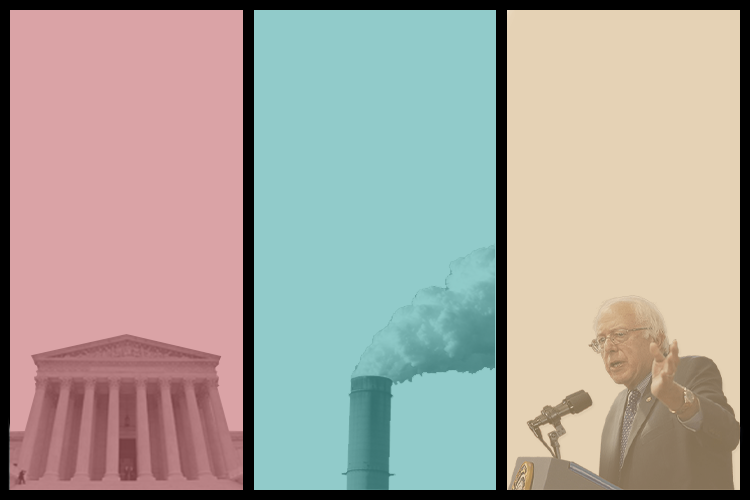The Incentive to Build
Last week, Marc Andreessen published a widely lauded essay entitled “IT’S TIME TO BUILD”. It went viral, particularly within tech/Silicon Valley/rationalism Twitter. People subsequently published tsheir own reactions to his piece, with everyone seemingly taking away something different. I will share the few additional thoughts I have here.
Incentives run the world. What incentive do you have to build for yourself? That question is easy. If something will be beneficial to you and you have the resources to build it, then you have the incentive to build it. The incentive to build a backyard greenhouse is the thought of fresh garden vegetables to eat year-round. The incentive to convert your basement into an associated dwelling unit is the prospect of a stable side income. The incentive to get a graduate degree is the prospect of higher long-run income or individual fulfillment.
But, what incentive do you have to build for us? That is, what incentive do we have to solve collective action problems? What incentive do you have to allow the house next to you to be knocked down and have an apartment building constructed in its place? What incentive do you have to spend your wealth founding a university that will drain your riches but make future generations wealthier beyond belief? What incentive do you have to repair the crumbling bridge that connects your town to the outside world?
You probably don’t have an incentive to allow these actions to happen. And in theory, private actors should not have to be incentivized to solve these problems. The government should be incentivized to solve these problems since the government’s main objective is to maximize the public good. The government should permit dense construction because more housing equates to massive net positive for the public at large. The government should fund new universities or research initiatives knowing that the long-run societal benefit exceeds the short-term fiscal cost. The government should repair the bridge with broad welfare in mind. But, the government is doing none of these things.
Ezra Klein’s response to Marc’s essay highlights all of the reasons why the government at all levels does not work well enough to solve these problems. Government is a vetocracy, where too many people have a say in processes where one “no” could derail it all. Government broadly has developed a broad aversion to power, where elected officials, bureaucrats, and private actors who want to build things are demonized and shot down for trying to do so. In short, we are not just not incentivizing building, but we are actively disincentivizing building.
So this leads us to the next question: how we will incentivize the government reforms needed to incentivize building once again? That is, if our lack of building is a symptom, and the state of our government institutions are the disease, how do we incentivize the reforms required to heal the disease? I have no idea. I fear sometimes that this situation might be a terminal one. If our government doesn’t have the incentive to build things, then there surely aren’t the incentives to build the incentive structures required to build things. I worry that the only way out of this is a radical paradigm shift in governance; one that will require upending the very fabric of society to fix. I am not eager to see what this paradigm shift will require.
Happy Earth Day. We still have work to do.
As I mentioned in the preamble, the Neoliberal Project is working on the release of its first policy project preliminary titled The 21st Century Clean Air Act. The public perception of air pollution has not caught up to the current public health threat we face from it. Air pollution calls to mind smog covered cities, but the real public health threat now comes from mostly invisible air pollution, notably small airborne particles that are 1/20 the width of a human hair, called PM2.5.
PM2.5 is responsible for 107,000 premature deaths in the United States annually, causing $886 billion in economic damages
Americans who had an annual average PM2.5 exposure of 12 μg/m3, the current EPA standards, lost .89 years off their lifespan compared to those who are exposed to an annual average of 7.5 μg/m3
According to the European World Health Organization, PM2.5 is responsible for 3% of cardiopulmonary and 5% of lung cancer deaths annually worldwide
For each 1 μg/m3 increase in PM2.5 exposure over a decade, the probability of being diagnosed with dementia diagnosis increases by 1.68%
Similarly, a 1 μg/m3 increase in average PM2.5 exposure over one year was shown to cause a 0.8% reduction in annual real GDP, a result driven by a reduction in output per worker
All of these outcomes are despite what the Clean Air Act already does for Americans. According to EPA estimates, the Clean Air Act will prevent 230,000 early deaths and create $2 trillion in economic benefits for the United States. For every $1 spent complying with the Clean Air Act, society reaps $30 in economic benefits.
With such the overwhelming success to the Clean Air Act, and its high cost-benefit ratio, we would be foolish not to be spending far more money a year preventing and mitigating the harmful effects of air pollution. In future editions of Exponents, I will describe the Neoliberal Project’s plan to combat the harmful effects of air pollution and our green method of financing it. Hopefully the government will build it.
Oh, and then there is also this about pollution:
Bernie Sanders posthumous
Finally, I found Briahna Joy Gray’s interview in the Atlantic to be an enlightening read, particularly her defense of her combative Twitter persona.
Green: Do you think that vitriolic back-and-forths on Twitter are good for American politics—for our sense of comradeliness as American citizens?
Gray: When I tweet a basic truism that 68,000 people a year die out of a lack of healthcare and I’m told I’m being divisive, that says a lot about my critics and not very much about me. My goal is to be comradely with workers who don’t have paid leave, to show solidarity with families who don’t have anyone to look after their kids in this pandemic—to fight for someone I don’t know, as Bernie Sanders has put it.
Essentially, her defense follows a familiar argument: mean tweets are okay because of an unrelated bad outcome. But no one has explained how calling supporters of a marginally different universal healthcare plan murderers on Twitter will accomplish single-payor healthcare.
The Democrats broadly don’t consider their ideological counterparts to be murderers. Democrats view the party and each other very favorably.
I divide the Democratic Party electorate into two parts: those who like the Democratic Party as is, and those who don’t and want to tear it down. Sanders banked on the latter being larger than the former. But at the end of the day, that just isn’t true. Banking on this was ultimately why Sanders wasn’t able to create a large enough coalition to win.



